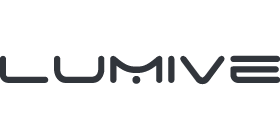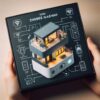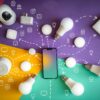The Future is Here: How IoT is Revolutionizing the Way We Live
The Internet of Things (IoT) has become a buzzword in recent years, revolutionizing the way we live and interact with technology. Simply put, IoT refers to the network of physical devices, vehicles, appliances, and other objects embedded with sensors, software, and connectivity that enables them to collect and exchange data. This concept has been around for decades, but it is only in recent years that it has gained significant traction and become an integral part of our daily lives.
The history of IoT can be traced back to the early 1980s when researchers at Carnegie Mellon University connected a Coke machine to the internet to monitor its inventory and temperature. However, it wasn’t until the late 1990s and early 2000s that the term “Internet of Things” was coined by Kevin Ashton, a British technology pioneer. Since then, IoT has evolved rapidly, driven by advancements in wireless communication, miniaturization of sensors, and the proliferation of smartphones.
The importance of IoT in today’s world cannot be overstated. It has the potential to transform industries, improve efficiency, enhance productivity, and create new business models. From smart homes to healthcare, transportation to agriculture, energy management to manufacturing, retail to security – IoT is reshaping every aspect of our lives. In this article, we will explore some of the key areas where IoT is making a significant impact and discuss the benefits and challenges associated with its implementation.
Key Takeaways
- IoT is revolutionizing the way we live by connecting devices and enabling them to communicate with each other.
- Smart homes are becoming more popular, allowing for greater control and automation of household tasks.
- IoT is transforming healthcare by improving patient care through remote monitoring and data analysis.
- Transportation is becoming safer and more efficient with IoT technology, including self-driving cars and real-time traffic monitoring.
- IoT is improving agriculture by optimizing crop yield and sustainability through precision farming techniques.
IoT and Smart Homes: A New Way of Living
Smart homes are one of the most visible applications of IoT in our daily lives. A smart home is a residence equipped with internet-connected devices that can be remotely monitored and controlled. These devices include smart thermostats, lighting systems, security cameras, door locks, appliances, and entertainment systems. The integration of these devices allows homeowners to automate various tasks and create a more convenient and comfortable living environment.
Imagine being able to control the temperature of your home, turn on the lights, and lock the doors, all from your smartphone. With IoT-enabled devices, this is now a reality. Smart thermostats, such as the popular Nest Learning Thermostat, can learn your preferences and adjust the temperature accordingly, saving energy and reducing utility bills. Smart lighting systems, like Philips Hue, allow you to control the color and intensity of your lights with a simple voice command or a tap on your smartphone.
The benefits of smart homes are numerous. They offer increased convenience, energy efficiency, and security. For example, IoT-enabled security cameras can send real-time alerts to your smartphone when they detect motion or sound, allowing you to monitor your home even when you’re away. Smart appliances can also help you save time and money by optimizing their performance based on your usage patterns.
IoT in Healthcare: Revolutionizing Patient Care
IoT is also transforming the healthcare industry, revolutionizing patient care and improving outcomes. From wearable devices that monitor vital signs to smart pills that track medication adherence, IoT is enabling healthcare providers to gather real-time data and make more informed decisions.
One example of IoT in healthcare is remote patient monitoring. Patients with chronic conditions can now use wearable devices to track their vital signs, such as heart rate, blood pressure, and blood glucose levels. This data is then transmitted to healthcare professionals, who can monitor their patients’ health remotely and intervene if necessary. This not only improves patient outcomes but also reduces hospital readmissions and healthcare costs.
Another area where IoT is making a significant impact is in medication management. Smart pill bottles can remind patients to take their medication at the right time and in the correct dosage. These devices can also track medication adherence and send alerts to both patients and healthcare providers if doses are missed. This helps improve medication compliance and reduces the risk of adverse events.
Despite its potential benefits, implementing IoT in healthcare comes with its own set of challenges. One of the main challenges is ensuring the security and privacy of patient data. With the increasing number of connected devices, there is a greater risk of data breaches and unauthorized access. Healthcare organizations need to invest in robust cybersecurity measures to protect patient information and comply with privacy regulations.
IoT and Transportation: Making Travel Safer and More Efficient
| Metrics | Description |
|---|---|
| Number of connected vehicles | The total number of vehicles equipped with IoT technology for communication and data exchange. |
| Reduction in accidents | The percentage decrease in the number of accidents due to IoT-enabled safety features such as collision avoidance systems and driver assistance. |
| Real-time traffic data | The availability of real-time traffic data collected by IoT sensors and devices to improve traffic flow and reduce congestion. |
| Carbon emissions reduction | The amount of reduction in carbon emissions due to IoT-enabled transportation systems such as electric vehicles and smart traffic management. |
| Cost savings | The amount of cost savings achieved through IoT-enabled transportation systems such as predictive maintenance and optimized route planning. |
IoT is also transforming the transportation industry, making travel safer, more efficient, and environmentally friendly. From connected cars to smart traffic management systems, IoT is revolutionizing the way we move from one place to another.
Connected cars are one of the most visible examples of IoT in transportation. These vehicles are equipped with sensors and connectivity that enable them to communicate with other vehicles, infrastructure, and pedestrians. This allows for real-time traffic monitoring, collision avoidance, and improved navigation.
For example, connected cars can receive real-time traffic updates and suggest alternative routes to avoid congestion. They can also communicate with traffic lights to optimize traffic flow and reduce waiting times at intersections. This not only improves the overall travel experience but also reduces fuel consumption and greenhouse gas emissions.
Another area where IoT is making a significant impact is in logistics and fleet management. IoT-enabled sensors can track the location, condition, and performance of vehicles and goods in real-time. This allows logistics companies to optimize their operations, reduce delivery times, and improve customer satisfaction.
However, implementing IoT in transportation comes with its own set of challenges. One of the main challenges is ensuring interoperability between different systems and devices. With multiple stakeholders involved, including vehicle manufacturers, infrastructure providers, and government agencies, there is a need for standardized protocols and communication frameworks to enable seamless integration.
IoT in Agriculture: Improving Crop Yield and Sustainability

In the agricultural sector, IoT is playing a crucial role in improving crop yield, reducing waste, and promoting sustainability. By leveraging sensors, drones, and data analytics, farmers can monitor and manage their crops more efficiently, resulting in higher productivity and reduced environmental impact.
One example of IoT in agriculture is precision farming. By using sensors to monitor soil moisture, temperature, and nutrient levels, farmers can optimize irrigation and fertilization practices. This not only reduces water and fertilizer usage but also improves crop yield and quality.
Drones are also being used in agriculture to monitor crop health and detect pests and diseases. Equipped with cameras and sensors, these unmanned aerial vehicles can capture high-resolution images of fields and analyze them using machine learning algorithms. This allows farmers to identify potential issues early on and take appropriate action, such as targeted pesticide application or irrigation.
The benefits of IoT in agriculture are significant. It enables farmers to make data-driven decisions, reduce input costs, and increase profitability. It also promotes sustainable farming practices by minimizing the use of water, fertilizers, and pesticides.
However, implementing IoT in agriculture is not without its challenges. One of the main challenges is the lack of reliable internet connectivity in rural areas. Many farms are located in remote locations where internet access is limited or unreliable. This hinders the adoption of IoT technologies that rely on real-time data transmission.
IoT and Energy Management: Reducing Carbon Footprint
IoT is also playing a crucial role in energy management, helping individuals and organizations reduce their carbon footprint and promote sustainability. By connecting devices and appliances to the internet, IoT enables real-time monitoring and control of energy consumption, leading to more efficient use of resources.
Smart meters are one example of IoT devices used in energy management. These devices measure electricity usage in real-time and provide consumers with detailed information about their energy consumption. This allows individuals to identify energy-intensive appliances or behaviors and make informed decisions to reduce their energy usage.
Another area where IoT is making a significant impact is in smart grids. By integrating renewable energy sources, energy storage systems, and demand response mechanisms, IoT-enabled smart grids can optimize energy generation, distribution, and consumption. This not only reduces reliance on fossil fuels but also improves the stability and reliability of the electrical grid.
The benefits of IoT in energy management are manifold. It enables individuals and organizations to reduce their energy costs, improve energy efficiency, and contribute to a more sustainable future. It also empowers consumers by providing them with real-time information about their energy usage and enabling them to make informed decisions.
However, implementing IoT in energy management comes with its own set of challenges. One of the main challenges is ensuring the interoperability and compatibility of different devices and systems. With multiple vendors and technologies involved, there is a need for standardized protocols and communication frameworks to enable seamless integration.
IoT and Manufacturing: Enhancing Efficiency and Productivity
In the manufacturing sector, IoT is revolutionizing the way products are made, improving efficiency, productivity, and quality. By connecting machines, sensors, and production lines, IoT enables real-time monitoring and control of manufacturing processes, leading to reduced downtime, improved asset utilization, and faster time to market.
One example of IoT in manufacturing is predictive maintenance. By using sensors to monitor the condition of machines and equipment, manufacturers can detect potential issues before they lead to breakdowns or failures. This allows for proactive maintenance and reduces unplanned downtime, resulting in cost savings and improved productivity.
Another area where IoT is making a significant impact is in supply chain management. By tracking the location and condition of goods in real-time, IoT-enabled sensors can improve inventory management, reduce stockouts, and optimize logistics operations. This not only improves customer satisfaction but also reduces costs associated with excess inventory or lost shipments.
The benefits of IoT in manufacturing are significant. It enables manufacturers to optimize their operations, reduce costs, and improve product quality. It also enables them to respond quickly to changing customer demands and market conditions.
However, implementing IoT in manufacturing comes with its own set of challenges. One of the main challenges is ensuring the security and privacy of sensitive production data. With the increasing number of connected devices and the potential for cyberattacks, manufacturers need to invest in robust cybersecurity measures to protect their intellectual property and trade secrets.
IoT in Retail: Personalizing Customer Experience
In the retail industry, IoT is transforming the way businesses interact with customers, personalizing the shopping experience and improving customer satisfaction. By connecting devices, sensors, and customer data, retailers can gather real-time insights and deliver personalized offers and recommendations.
One example of IoT in retail is beacon technology. Beacons are small devices that use Bluetooth Low Energy (BLE) to transmit signals to nearby smartphones. By placing beacons in stores, retailers can send personalized offers, discounts, or product recommendations to customers based on their location or purchase history. This not only enhances the shopping experience but also increases customer engagement and loyalty.
Another area where IoT is making a significant impact is in inventory management. By using RFID tags and sensors, retailers can track the location and availability of products in real-time. This allows them to optimize their inventory levels, reduce stockouts, and improve order fulfillment.
The benefits of IoT in retail are numerous. It enables retailers to deliver personalized experiences, increase customer engagement, and drive sales. It also helps them optimize their operations, reduce costs, and improve supply chain efficiency.
However, implementing IoT in retail comes with its own set of challenges. One of the main challenges is ensuring the privacy and security of customer data. With the increasing amount of personal information collected by IoT devices, retailers need to comply with privacy regulations and implement robust cybersecurity measures to protect customer information.
IoT and Security: Protecting Our Digital Lives
As IoT devices become more prevalent in our daily lives, security has become a major concern. With billions of connected devices transmitting sensitive data over the internet, there is a greater risk of data breaches, unauthorized access, and cyberattacks.
IoT devices in the security sector include smart locks, surveillance cameras, and alarm systems. These devices can be remotely monitored and controlled, providing homeowners with peace of mind and enhanced protection. For example, smart locks can be locked or unlocked using a smartphone, and surveillance cameras can send real-time alerts when they detect suspicious activity.
However, IoT devices themselves can be vulnerable to cyberattacks. Many IoT devices have weak security measures, making them easy targets for hackers. Once compromised, these devices can be used as entry points to gain access to other devices or networks.
To address these security concerns, manufacturers and service providers need to prioritize security in the design and development of IoT devices. This includes implementing strong encryption, authentication mechanisms, and regular software updates. Users also need to be educated about the importance of securing their IoT devices and following best practices, such as changing default passwords and keeping software up to date.
Challenges and Opportunities in the IoT Era
While IoT offers numerous benefits, it also presents several challenges that need to be addressed for its widespread adoption. One of the main challenges is privacy and security concerns. With the increasing number of connected devices collecting and transmitting sensitive data, there is a greater risk of data breaches and unauthorized access. This calls for robust cybersecurity measures and privacy regulations to protect user information.
Another challenge is interoperability issues. With multiple vendors and technologies involved in IoT ecosystems, there is a need for standardized protocols and communication frameworks to enable seamless integration. This will ensure that different devices and systems can communicate with each other effectively.
Despite these challenges, the IoT era also presents significant opportunities for innovation and growth. The ability to collect and analyze vast amounts of data in real-time opens up new possibilities for businesses to gain insights, optimize operations, and create new products and services. It also enables individuals to lead more connected and convenient lives, with smart homes, personalized healthcare, and efficient transportation.
The Future of IoT and Its Impact on Our Lives
In conclusion, the Internet of Things (IoT) has emerged as a transformative force, reshaping every aspect of our lives. From smart homes to healthcare, transportation to agriculture, energy management to manufacturing, retail to security – IoT is revolutionizing industries and improving efficiency, productivity, and sustainability.
The future of IoT looks promising. As technology continues to advance and connectivity becomes more ubiquitous, we can expect to see even greater integration of IoT devices in our daily lives. From autonomous vehicles to smart cities, the possibilities are endless.
However, for IoT to reach its full potential, there are challenges that need to be addressed. Privacy and security concerns, interoperability issues, and the need for standardized protocols are some of the key challenges that need to be overcome.
In conclusion, embracing IoT is crucial for a better future. It has the potential to improve our quality of life, enhance productivity, and create new opportunities for innovation and growth. As individuals, businesses, and governments, we need to embrace IoT and work together to address its challenges and unlock its full potential. Only then can we truly harness the power of IoT and create a better future for all.
FAQs
What is IoT?
IoT stands for Internet of Things. It is a network of physical devices, vehicles, home appliances, and other items embedded with electronics, software, sensors, and connectivity which enables these objects to connect and exchange data.
How is IoT revolutionizing the way we live?
IoT is revolutionizing the way we live by making our lives more convenient, efficient, and productive. It is enabling us to control our homes, cars, and other devices remotely, monitor our health and fitness, and improve our safety and security.
What are some examples of IoT devices?
Some examples of IoT devices include smart thermostats, smart locks, smart lights, smart speakers, smart TVs, smart refrigerators, smart watches, fitness trackers, and connected cars.
How does IoT work?
IoT devices work by collecting data through sensors and sending it to a central hub or cloud-based platform where it can be analyzed and used to make decisions or trigger actions. They communicate with each other using wireless technologies such as Wi-Fi, Bluetooth, and cellular networks.
What are the benefits of IoT?
The benefits of IoT include increased efficiency, improved productivity, enhanced safety and security, better health and wellness, and greater convenience and comfort. It also has the potential to reduce costs and environmental impact.
What are the challenges of IoT?
The challenges of IoT include security and privacy concerns, interoperability issues, data management and analysis, and the need for standardization and regulation. There are also concerns about the impact of IoT on employment and the economy.









